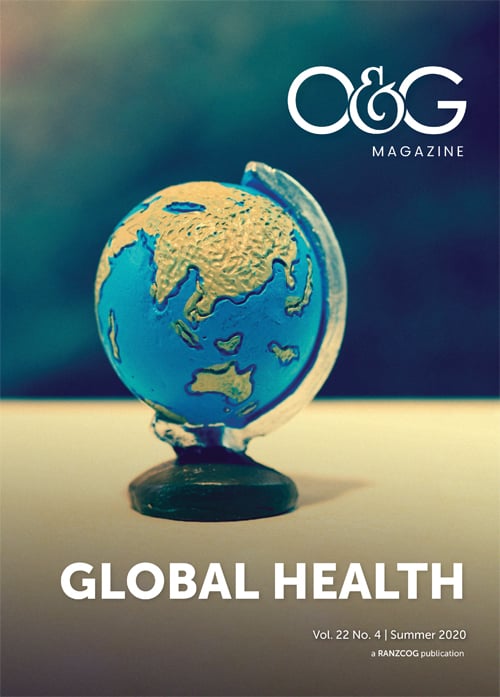In 1631, Mumtaz Mahal, the wife of Emperor Shah Jahan, died after a postpartum haemorrhage following a 30-hour labour with her 14th child. The response was a nation-wide two-year period of mourning across India, and the construction of the Taj Mahal in her memory.1 Across the other side of the world, in 17th Century Sweden, the response of Queen Ulrika Eleonora to the burden of maternal deaths was to establish the first midwifery school and introduce a policy to train one or two women from every village in midwifery.2 Notably, this strategy of community midwifery in Sweden resulted in that country’s maternal mortality ratio (MMR), the number of maternal deaths per 100,000 live births, to come down to 230 by 1900. Sweden’s MMR in 1900 was less than half of that of the UK or the US at that same time, (half a century before routine operative deliveries, blood transfusions and antibiotics were available) and well below that of many countries in 2020.
The story of the global response to address maternal deaths is a one of evolving approaches, competing initiatives, and major challenges in estimating the burden of disease.3
The first difficulty is accurately knowing the number of maternal deaths in a given setting. In Australia, where the MMR was 5 in 2017, we have comprehensive cause of death certification. The same is not true for low-income countries, where most maternal deaths occur. These are settings where civil registration systems are not in place, and reporting causes of death, particularly for out-of-facility deaths, is almost non-existent. In these settings, the MMR estimate is calculated from population-based survey data, local studies and modelling based on a range of parameters that are associated with improved maternal outcomes (such as the proportion of facility-based births, the GDP, the fertility rate). The most recent estimate for the global MMR is 211, a reduction of 37% since 2000. However, there are significant regional variations. North America is the only region where MMR is increasing (Table 1).4
Table 1. Global MMR trends. Source: WHO, UNICEF, UNFPA, World Bank Group and UNPD (MMEIG) – September 2019
| Country / Region | 2000 | 2005 | 2010 | 2015 | 2017 |
| East Asia and Pacific | 114 | 100 | 86 | 73 | 69 |
| Western Europe | 8 | 7 | 6 | 6 | 5 |
| Latin America and Caribbean | 96 | 90 | 84 | 76 | 74 |
| Middle East and North Africa | 95 | 81 | 63 | 59 | 57 |
| North America | 12 | 13 | 14 | 17 | 18 |
| South Asia | 395 | 309 | 235 | 179 | 163 |
| Sub-Saharan Africa | 870 | 746 | 626 | 557 | 533 |
| Australia | 7 | 5 | 5 | 6 | 6 |
| Least developed countries | 763 | 635 | 520 | 442 | 415 |
| World | 342 | 296 | 248 | 219 | 211 |
A global MMR of 211 equates to some 808 women dying each day from preventable causes due to pregnancy or childbirth, 86% of whom live in Sub-Saharan Africa or South Asia. And three out of four maternal deaths are due to direct obstetric causes, including haemorrhage, eclampsia, sepsis, obstruction and unsafe abortion, the vast majority of which are preventable.5
The history of global responses to reduce maternal deaths in low- and middle-income countries dates from initiatives in the 1970s and 1980s focused on training traditional birth attendants (TBAs), locally recognised women who assisted at the time of birth but who had no formal health training. Realising that most hospitals, midwives and doctors were urban based where less than 10% of the population resided, the efforts were focused on training TBAs to do risk screening and encourage safer practices, the so called three cleans of a home birth ‘hand washing with soap, clean cutting implement and cord tie, and clean surface’. By the late 1980s, the number of women dying as a complication of pregnancy and childbirth had not changed in 20 years. Risk screening was poorly predictive, and recognising that TBAs were in no position to manage a life-threatening complication, the focus shifted to supporting women to birth with the assistance of skilled birth attendants (SBA), a midwife or a doctor and a resultant shift to birthing in a health facility.6
By the late 1990s a set of process indicators had been developed including recommended population-based guidelines for the number of facilities able to provide Emergency Obstetric Care (EmOC) – where basic or BEmOC facilities provided care for women, including managing obstetric complications except for the provision of caesarean sections and blood transfusions, while comprehensive care (CEmOC) included all the signal functions of BEmOC with the additional provision of operative birth and blood transfusions.7
Such was the enthusiasm for this approach that in 2000, when the Millennium Development Goal (MDG) targets were being crafted, the maternal health target was set at an ambitious 75% reduction by 2015 against the baseline of 1990. The MDGs galvanised governments and donors to improve the coverage of care through a range of initiatives including health financing mechanisms to reduce the out-of-pocket spending on hospital maternity care, and scaling up rural services to improve geographic access. A number of global health initiatives were established.8
The strategy of supporting SBAs with a functional health system resulted in significant progress and by 2015, while the MDG target had not been reached, an estimated 44% reduction in maternal deaths had been recorded, yet the increased coverage of antenatal care and facility-based births did not result in the expected reduction in maternal deaths. Over the last 10 years, there has been a renewed focus on how to improve the quality of care received, recognising that while the majority of women will now seek care at a facility at the time of childbirth – many may still be arriving at under-resourced facilities, 40% of hospitals in Sub-Saharan Africa do not have adequate water and sanitation supplies, and there are major health workforce shortages. The Sustainable Development Goals (SDGs), the agreed development goals for 2030, are aiming for a global MMR of 70 with no individual country having an MMR over 140. This requires a huge investment in not just supporting women to get to a facility for their birth, but ensuring that once she gets there, she receives high-quality care that is respectful and woman centred.
The risk of COVID-19 on further progress in global maternal health is significant. A recent WHO survey of 105 countries reported that 34% had had significant disruption to the provision of obstetric care in the first half of 2020, a combination of lockdown measures reducing access, staff being redeployed, and concerns regarding transmission that create fear and uncertainty in both providers and women and their families.9 In the first three months of lockdown in Nepal, for example, across nine referral hospitals, facility-based births halved, stillbirths increased by 50% and neonatal mortality doubled.10 Modelling a 40–50% decreased coverage of institutional births across 118 high-burden countries estimates an additional 56,700 maternal deaths.11 There is a real risk of the pandemic reversing the progress made in the last 20 years.
Reflecting on the responses to maternal deaths that occurred in the 1600s in India and Sweden, the year 2020 presents an opportunity to build not a mausoleum, however glorious the Taj Mahal might be, but rather a network of high-quality health systems designed to meet the needs of women throughout their reproductive lives, regardless of where they live. In this way, the SDGs could be a realistic, achievable goal.
References
- Kumar A. Monument of Love or Symbol of Maternal Death: The Story Behind the Taj Mahal. Case Reports in Women’s Health. 2014. DOI: 10.1016/j.crwh.2014.07.001.
- Högberg U. The decline in maternal mortality in Sweden: the role of community midwifery. American Journal of Public Health. 2004;94(8):1312-20.
- Shiffman J, Smith S. Generation of political priority for global health initiatives: a framework and case study of maternal mortality. Lancet. 2007;370(9595):1370-9.
- World Health Organization. Trends in maternal mortality 2000 to 2017: estimates by WHO, UNICEF, UNFPA, World Bank Group and the United Nations Population Division. Geneva; 2019.
- World Health Organization. Trends in maternal mortality 2000 to 2017: estimates by WHO, UNICEF, UNFPA, World Bank Group and the United Nations Population Division. Geneva; 2019.
- Rosenfield A, Maine D. Maternal mortality-a neglected tragedy: Where is the M in MCH? Lancet. 1985;326(8446):83-5.
- UNICEF, WHO, UNFPA. Guidelines for Monitoring the Availability and Use of Obstetric Services. New York: United Nations Children’s Fund; 1997.
- Moller AB, Patten JH, Hanson C, et al. Monitoring maternal and newborn health outcomes globally: a brief history of key events and initiatives. Tropical Medicine & International Health. 2019;24(12):1342-68.
- WHO. Pulse Survey on continuity of essential health services during the COVID-19 pandemic report: interim report, 27 August 2020. Available from: www.who.int/publications/i/item/WHO-2019-nCoV-EHS_continuity-survey-2020.1
- Ashish K, Gurung R, Kinney MV, et al. Effect of the COVID-19 pandemic response on intrapartum care, stillbirth, and neonatal mortality outcomes in Nepal: a prospective observational study. Lancet Global Health. 2020;8(10):e1273-81.
- Roberton T, Carter ED, Chou VB, et al. Early estimates of the indirect effects of the COVID-19 pandemic on maternal and child mortality in low-income and middle-income countries: a modelling study. Lancet Global Health. 2020;8(10):e901-8.






Leave a Reply